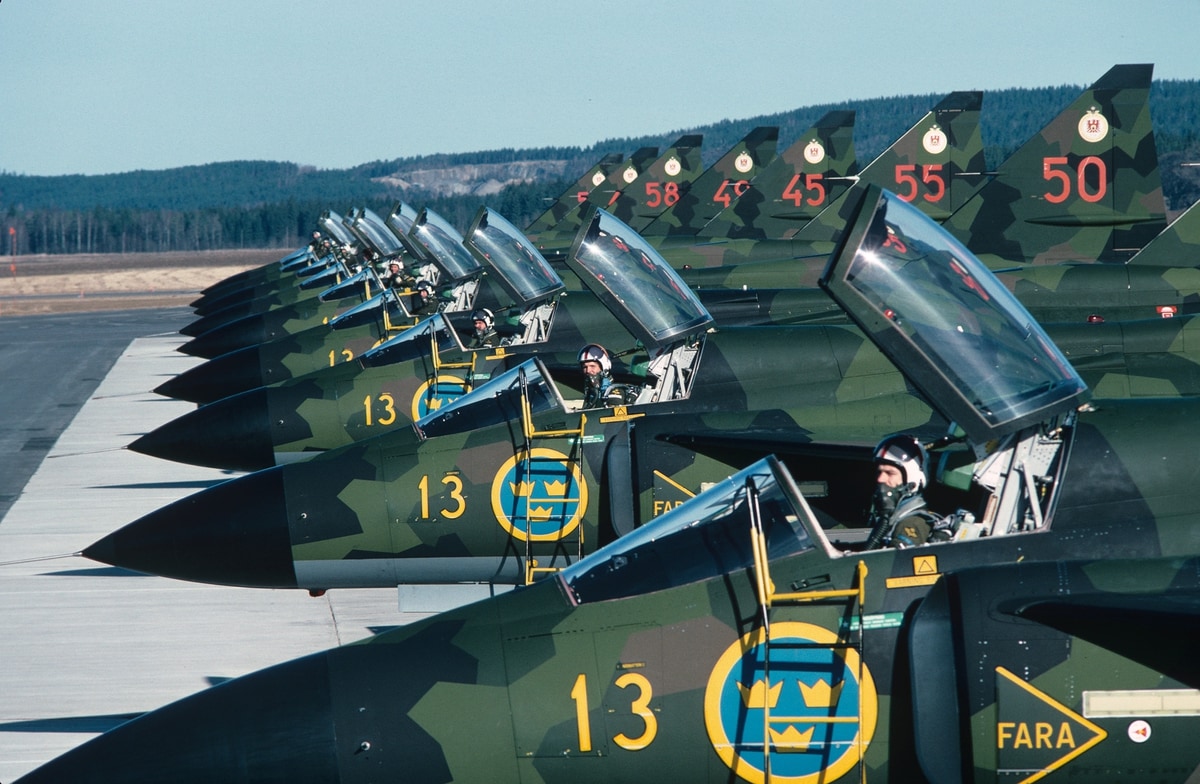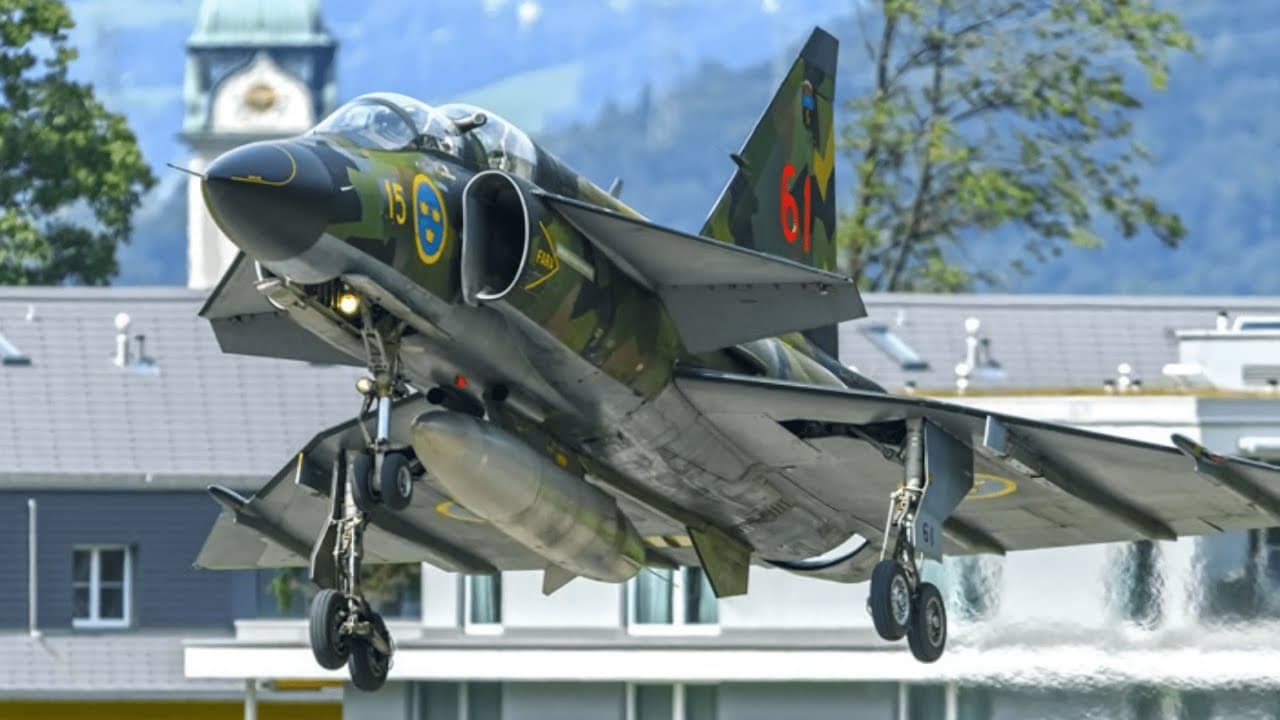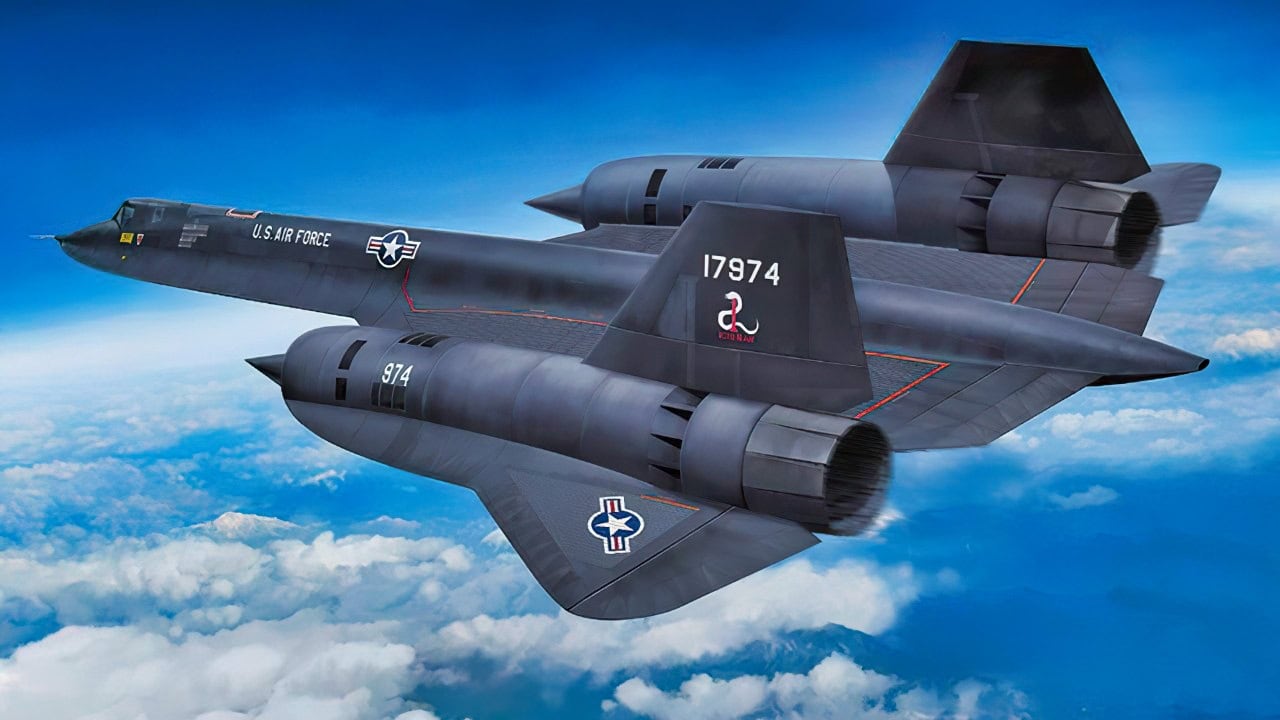Article Summary – Though over 4,000 missiles were fired at the SR-71 Blackbird, the legendary spyplane was never shot down—and only one foreign jet ever achieved a radar lock: Sweden’s Saab 37 Viggen.
-Neutral but ringed by Cold War tensions, Sweden sat astride U.S.–Soviet flight paths and scrambled hundreds of times a year to intercept unknown aircraft.

Saab 37 Viggen

S37 Viggen. Image Credit: Creative Commons.

Image is of a Saab 37 Viggen. Image Credit: Creative Commons.
-Using a sophisticated datalink, precise mission planning, and head-on “Baltic Express” intercept profiles, Viggen pilots like Per-Olof Eldh managed multiple hot intercepts, briefly matching the Blackbird’s altitude and speed.
-Their success underscored Sweden’s quiet sophistication in air defense despite its nonaligned status.
How Sweden’s Saab 37 Viggen Did What Russia Never Could to the SR-71
The SR-71 Blackbird was, famously, never shot down, although a dozen of them were lost in accidents over the course of its service.
There was only ever one foreign jet that ever achieved radar lock on the famed spyplane. And the jet that did it was not from Russia, China, or any other formidable enemy nation—it was from Sweden.
Sweden was famously neutral during the Cold War and, indeed, had a centuries-long policy of avoiding military alliances, which ended when it joined NATO in 2024. But for all the years that the US and Soviet Union attempted to spy on each other, Sweden was right in the middle.
Swedish Flights
Per Aviation Geek Club, because Sweden is located so centrally and was neutral, it had a special part to play in the Cold War.
“At the height of the Cold War, when East-West tensions were at their greatest, Swedish Saab 37 Viggen fighter pilots were scrambled on 400-500 live Quick Reaction Alert (QRA) missions per year to intercept any unidentified aircraft approaching Swedish airspace,” AGC said in a 2018 story.
This happened, the report said, when planes got too close to Swedish airspace, regardless of which side of the Cold War they came from.
One of those planes was the SR-71, which, due to its speed, was notoriously hard to spot.
Per AGC, which cited Paul F. Crickmore’s book Lockheed Blackbird: Beyond the Secret Missions, the Blackbird posed a special challenge to Sweden’s attempts to intercept it.
A retired Swedish fighter controller, Rolf Jonsson, spoke about those days in Crickmore’s book.
“The most spectacular alerts in the Swedish Air Force during the eighties occurred about once a week, when the Blackbird was operating in the Baltic,” Jonsson told the author.
“These were also probably the most frustrating events of the entire Cold War, with our fighters trying to reach the same altitude and position as this high-speed, high altitude target, efforts which, if successful, would allow the fortunate pilot to catch a brief glimpse of the fantastic SR-71 at quite close quarters.”
They first did this with the Saab J-35F Draken, which wasn’t up to the task. But Jonsson and the others realized that “the method that offered the greatest opportunity of success was a frontal attack, with both aircraft exactly on a 180° divergent heading.”

SR-71. SR-71 photo taken at the National Air and Space Museum and taken by 19FortyFive on 10/1/2022.
An analysis by Sandboxx, published in 2023, examined the confluence of circumstances that enabled it to do what no other jet could. It was a combination of “the routine nature of the SR-71 flights, Sweden’s early advances with sophisticated data links, excellent mission planning, and – importantly – the technical skill of the Swedish aviators, the Viggen’s performance shortcomings were all overcome over time.”
Enter the Saab 37 Viggen
The Swedes realized they would have better luck once the Saab 37 Viggen entered service, featuring what was described as a “highly sophisticated datalink.”
“Suddenly the mix was right; the aircraft’s performance and avionics capabilities combined with the eagerness of its pilots and a high degree of teamwork with the air command and control centres, including the radar tracker (a conscript), the intercept controller and the pilots,” he said in the book.
The Swedes knew that the Blackbird would take a “Baltic Express” flight, in which they entered the Baltic Sea at a certain point, and a scramble by JA-37s followed.
“The SR-71 Baltic Flight path remained the same throughout the time it operated in Europe and consisted of a [single] anticlockwise loop that took about 30 minutes to complete,” Johnsson said in the book. It would later take a left turn near the Estonian island of Saaremaa, before passing through a brief window of international airspace, between Gotland and Öland.
The First Successful Intercept
Crickmore’s book, as cited by Aviation Geek Club, also tells the story of the first-ever successful intercept of an SR-71 over the Baltic. The pilot’s name was Per-Olof Eldh, and he told the story in the book.
“When I conducted the first Swedish Air Force intercept of an SR-71, the target had completed its north-bound pass of the Soviet coastline, and had turned west, south of the Finnish island of Aland, and was tracking south of a heading that would take it between Gotland and Öland,” the pilot told Crickmore in the book.
“The datalink from the fighter controller was on, and I lined up for a head-on attack with a target angle of 180°. From my altitude of 8.000m, I accelerated to Mach 1.35 then pulled up, very gently, continuing to accelerate to between Mach 1.7 and Mach 2.0, topping out at between 18.500 and 20.000m,” the pilot said. “All the target data was on my map display, including radar detection of the target at maximum range, which then locked on immediately afterwards. I simulated missile launches – the closing velocity was very high, between Mach 4.5 and 5.0; the SR-71 was flying at Mach 2.98 and 21.500m. I had visual contact.”
That pilot, alone, claimed a total of “five hot intercepts against the SR-71.”

SR-71 Blackbird. Image Credit: Creative Commons.

SR-71 Blackbird. Image Credit: Creative Commons.

SR-71. SR-71 photo taken at the National Air and Space Museum. Taken by 19FortyFive on 10/1/2022.
One notable incident occurred in January of 1986, the year Top Gun was released and helped spark global interest in Cold War-era dogfights.
According to that pilot, he was “leading a JA-37 (Saab 37 Viggen) three-ship in aircraft tail number “38”, we received target data immediately after take-off from Bravalla. We flew in trail, receiving updated target information over the link from both the fighter controller and the other fighters in the formation.” All three of them, he told the author, “carried out successful intercepts,” with the Blackbird “flying at an altitude of 22.000m and a speed of Mach 2.9.”
A Mitigating Factor?
According to that Sandboxx analysis, “the counterargument contends that the United States didn’t see formally neutral Sweden as a threat, and as such, there was little mission planning oriented toward mitigating these intercepts.”
The following year, in 1997, Swedish fighters actually came to the rescue of a damaged SR-71.
About the Author: Stephen Silver
Stephen Silver is an award-winning journalist, essayist, and film critic, and contributor to the Philadelphia Inquirer, the Jewish Telegraphic Agency, Broad Street Review, and Splice Today. The co-founder of the Philadelphia Film Critics Circle, Stephen lives in suburban Philadelphia with his wife and two sons. For over a decade, Stephen has authored thousands of articles that focus on politics, national security, technology, and the economy. Follow him on X (formerly Twitter) at @StephenSilver, and subscribe to his Substack newsletter.

